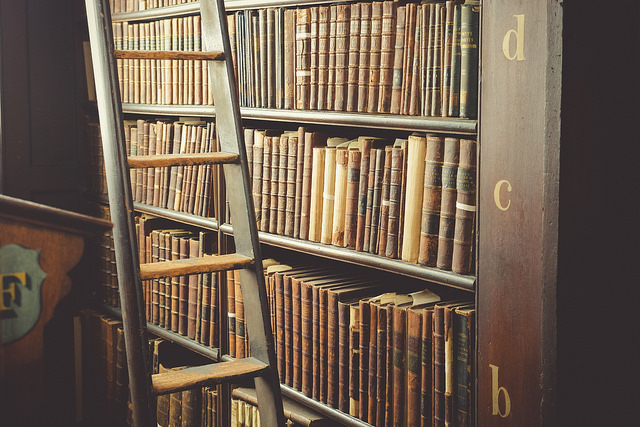
After rather awkwardly skipping the monumental queue of tourists into the Old Library and making my way through the Book of Kells exhibit (which, as expected, hasn’t changed much since the first time I visited as a bright-eyed first year), I made it to the beautiful Long Room, Trinity’s star attraction.
Aside from the its well-known permanent exhibitions, like the marble busts lining the hall and one of the last surviving copies of the 1916 Proclamation of the Irish Republic, the Long Room also plays host to a number of literary exhibitions rotating throughout the year.
The current exhibition, “Story Spinners: Irish Women and Children’s Books”, is a celebration of female Irish writers and illustrators writing for children, ranging from the 18th century to the early 20th century. All of the books are pulled from Trinity’s library, with many taken from the famed Pollard collection of children’s books. The exhibition was curated by students and staff from the children’s literature master’s programme, a relatively new and successful course.
The exhibition features a number of well-known literary figures, including Maria Edgeworth, Siobhan Dowd, and even Maude Gonne, whose ornate illustrations are featured in Ella Young’s Celtic Wonder-Tales.
Many of the books are based in Irish myth and culture, which is no surprise considering the number of artists featured with links to the literary revival and the Easter Rising itself, such as Gonne and Lady Gregory. Along with the usual moral teachings evident in literature for children of the time, many of the books are also mostly targeted towards young girls, with a very suffragette-style undertone. Writers such as Patricia Lynch and Sophia Rosamond Praeger were active in feminist circles of their times, whose values are reflected in their works for young girls. The exhibition even features a copy of Violet Ginny’s A Daughter of Erin, from which the Irish nationalist women’s group Inghinidhe na hÉireann, founded and headed by Gonne, took its name. The whole feel of the exhibition could be summed up by words from Gonne herself: “Irish girls of today, don’t be flappers. Do your work for your country as Inghinidhe na hÉireann did.”
The exhibition features a wide range of work by women writers from different eras in Irish history. The pieces chosen are incredibly impressive in their connections to both Irish literary and political history. Anyone with even a passing interest in either of these subjects, even to see the stunning illustrations, will enjoy this exhibition.
The library is also hosting an exhibit showcasing a number of original books made by children as part of “Bookmarks”, a course facilitated by the Trinity Access Programme (TAP), the School of English and Trinity’s library. The exhibit contains a great number of handwritten and illustrated books by young writers, and is a great example of the kind of talent that will perhaps one day carry on the great Irish literary culture in years to come.
The current exhibitions run until May and are a perfect break from the library for any Trinity student in the run-up to exams.






